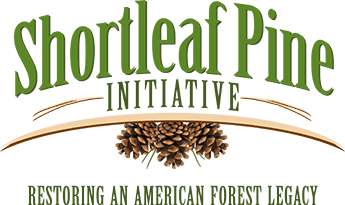|
Shortleaf research, newspaper articles, fact sheets, conference proceedings, literature reviews, and brochures.
All Shortleaf publications and documents Artificial regeneration of shortleaf pine
Artificial regeneration of shortleaf pine
Barnett, J. P., Brissette, J. C., & Carlson, W. C. (1986). Artificial regeneration of shortleaf pine. Cooperative Extension Service, SD 397. P 617. Retrieved from http://citeseerx.ist.psu.edu/viewdoc/download?doi=10.1.1.443.2633&rep=rep1&type=pdf#page=71 Matthews, S. N., Iverson, L. R., Peters, M. P., Prasad, A. M., & Subburayalu, S. (2014). Assessing and comparing risk to climate changes among forested locations: implications for ecosystem services. Landscape ecology, 29(2), 213-228. Retrieved from http://link.springer.com/article/10.1007/s10980-013-9965-y Stewart, J. F., Tauer, C. G., & Nelson, C. D. (2011). Bidirectional introgression between loblolly pine (Pinus taeda L.) and shortleaf pine (P. echinata Mill.) has increased since the 1950s. Tree Genetics & Genomes, 8(4), 725-735. Retrieved from https://link.springer.com/article/10.1007/s11295-011-0459-2  Biology of chlamydospores, sporangia, and zoospores of Phytophthora cinnamomi in soil
Biology of chlamydospores, sporangia, and zoospores of Phytophthora cinnamomi in soil
Hwang, S., & Ko, W. (1978). Biology of chlamydospores, sporangia, and zoospores of Phytophthora cinnamomi in soil. Phytopathology, 68, 726-731. Retrieved from http://www.apsnet.org/publications/phytopathology/backissues/Documents/1978Articles/Phyto68n05_726.pdf  Biomass of shortleaf pine in a natural sawtimber stand in northern Mississippi
Biomass of shortleaf pine in a natural sawtimber stand in northern Mississippi
Clark III, A., & Taras, M. A. (1976). Biomass of shortleaf pine in a natural sawtimber stand in northern Mississippi. Southeastern Forest Experiment Station, Research Paper SE-146. Retrieved from https://www.srs.fs.usda.gov/pubs/rp/rp_se146.pdf  Birds of shortleaf pine forests in Missouri: an historical and contemporary perspective
Birds of shortleaf pine forests in Missouri: an historical and contemporary perspective
Eddleman, W. R., Clawson, R. L., & Eberly, J. (2007). Birds of shortleaf pine forests in Missouri: an historical and contemporary perspective. Northern Research Station, General Technical Report NRS-P-15 proceedings of a symposium; 2006 November 7-9; Springfield, MO. Retrieved from https://www.nrs.fs.fed.us/pubs/gtr/gtr_p-15%20papers/31eddleman-p-15.pdf Stevenson, D. J., Lynch, T. B., & Guldin, J. M. (2012). Blue storms depress growth of shortleaf pine in western Arkansas and eastern Oklahoma. Proceedings of the 16th biennial southern silvicultural research conference. e-Gen. Tech. Rep. SRS-156. Asheville, NC: U.S. Department of Agriculture Forest Service, Southern Research Station. 318-319. Retrieved from http://www.treesearch.fs.fed.us/pubs/41516  Branch and foliage biomass relations for shortleaf pine in southeast Oklahoma
Branch and foliage biomass relations for shortleaf pine in southeast Oklahoma
Sabatia, C. O., Lynch, T. B., & Will, R. E. (2007). Branch and foliage biomass relations for shortleaf pine in southeast Oklahoma. Proceedings of a symposium; 2006 November 7-9; Springfield, MO. Gen. Tech. Rep. NRS-P-15. Newtown Square, PA: U.S. Department of Agriculture, Forest Service, Northern Research Station: 192-193. Retrieved from https://www.nrs.fs.fed.us/pubs/gtr/gtr_p-15%20papers/35sabatia-p-15.pdf  Buds enable pitch and shortleaf pines to recover from injury
Buds enable pitch and shortleaf pines to recover from injury
Little, S., & Somes, H. A. (1956). Buds enable pitch and shortleaf pines to recover from injury. Northeastern Research Station, Station Paper NE-81. Retrieved from https://www.nrs.fs.fed.us/pubs/sp/sp_ne081.pdf Turner, L. M. (1935). Catastrophes and pure stands of southern shortleaf pine. Ecology, 16(2), 213-215. Retrieved from http://www.jstor.org/stable/1932427?seq=1#page_scan_tab_contents |

